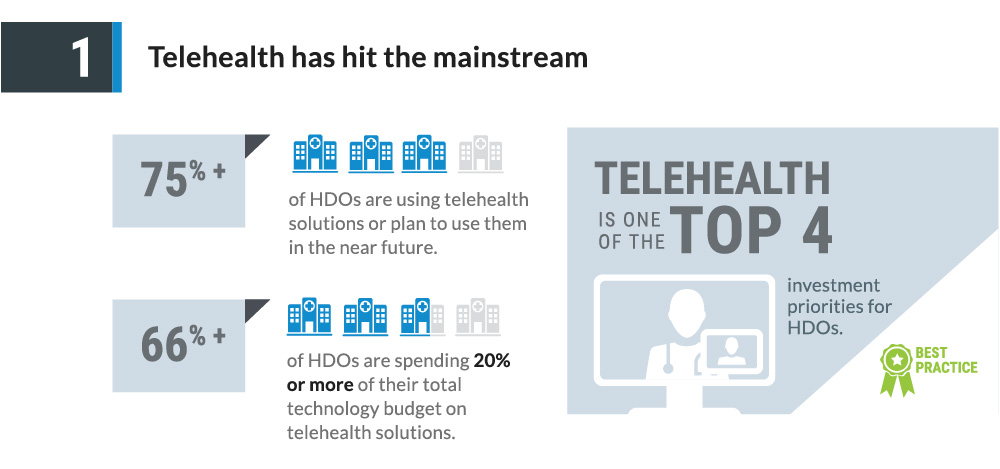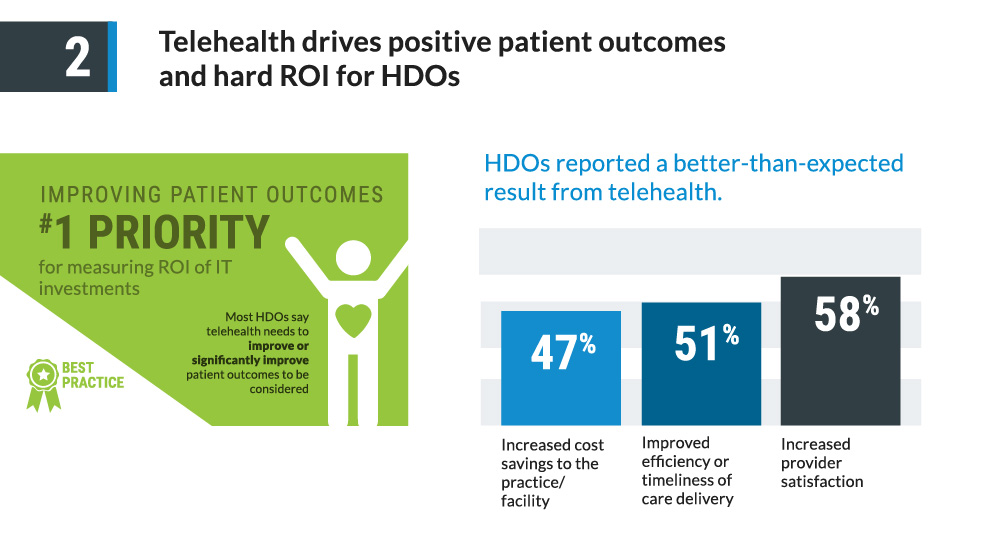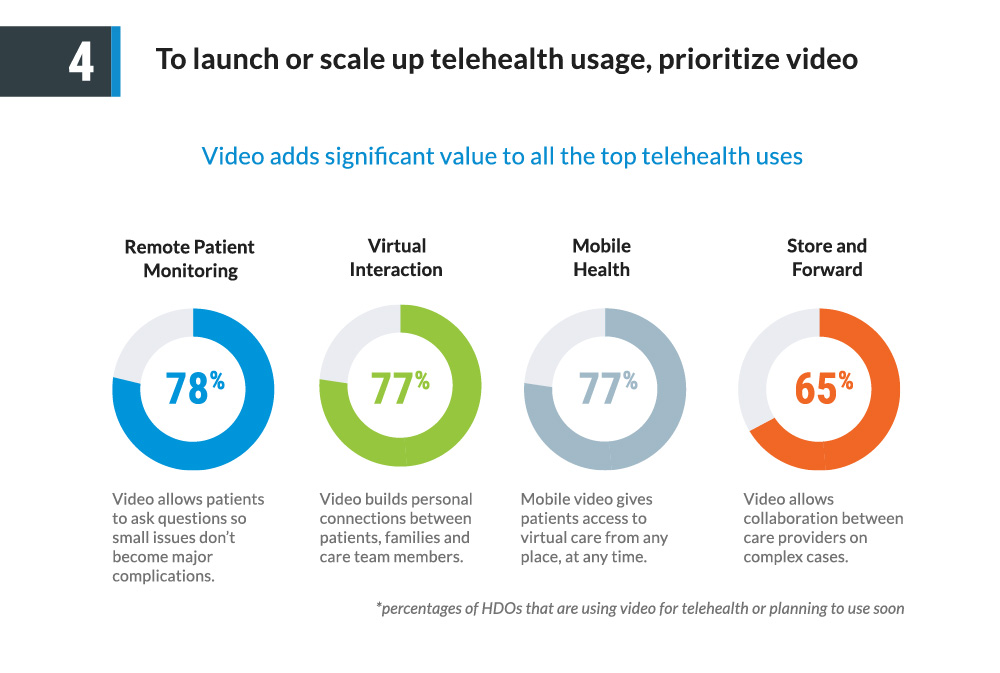Survey of Over 300 Healthcare Professionals Reveals Clear Insights for Telehealth in 2018
In the latter part of 2017, Vidyo engaged custom research firm Hanover Research to conduct a telemedicine trends survey of over 300 clinical and IT professionals with decision-making authority over telehealth investments and practices in the United States and Canada. The survey focused on the use and planned use of telemedicine and telehealth technologies by healthcare delivery organizations (HDOs), revealing five key insights that all professionals who are embarking on — or plan to embark on — telehealth initiatives should consider in their journeys.
Insight #1: Telehealth has hit the mainstream
Most HDOs have made telehealth an important part of their strategy. It’s a top IT investment priority, alongside other mission-critical initiatives, and HDOs are allocating significant budget resources. Further, many HDOs have dedicated resources for telehealth, and most plan to increase their investment, including upgrading existing technologies.
A few key findings from our telemedicine trends survey:
- Over three-quarters of HDOs are using telehealth solutions or plan to use them in the near future
- Telehealth is one of the top four investment priorities for HDOs
- Most HDOs expect to increase their telehealth budgets in the next one to three years
The survey also revealed that few HDOs are going it alone and trying to build their own telehealth solutions without help. In fact, most HDOs partner with a technology provider on their telehealth platform, or plan to, rather than building it themselves.
Insight #2: Telehealth drives positive patient outcomes and hard ROI for HDOs
HDOs prioritize improving patient outcomes above all else when considering IT investments— and such investments must make a big impact to be considered worthwhile. Further, most HDOs measure the impact of IT investments, and when they analyze their telehealth effectiveness, they’re seeing significant benefits.
A few key findings from our telemedicine trends survey:
- Most HDOs say telehealth needs to improve or significantly improve patient outcomes to be considered worthwhile
- Almost two-thirds of HDOs using patient outcomes as an ROI metric reported a better-than-expected result from telehealth
- More than half of HDOs reported better-than-expected results from telehealth in the areas of increased provider satisfaction and improved efficiency or timeliness of care delivery
To make your business case for telehealth, demonstrating “hard” ROI is essential and will help convince your CFO that telehealth is good for both patients and the HDO’s bottom line.
Insight #3: Reluctant adopters are out of excuses
Launching or scaling up telehealth isn’t as daunting as it might seem. More HDOs anticipate issues than actually experience these issues. Further, HDOs agree that patients are receptive to using telehealth, and telehealth technologies are easy to use for everyone.
Our telemedicine trends survey reveals the top four reasons why patients are receptive to telehealth:
- Ease of use
- Flexibility
- Minimizing time off work
- More hours of service availability
While the survey reveals that nearly 70% of patients are currently receptive to using telehealth (according to the HDOs that were interviewed), in our increasingly digital and mobile society, we expect the percentage of receptive patients to increase over the next three years, particularly as HDOs’ telehealth practices and technologies continue to mature.
Insight #4: To launch or scale up telehealth usage, prioritize video
Wondering how to get started accelerating your telehealth initiatives? Quite simply, prioritize video.
According to our telemedicine trends survey respondents, video creates significant value for the top telehealth uses in four key areas:
- Remote patient monitoring
- Virtual interaction
- Mobile health
- Store and forward
These top telehealth uses play an important role across all stages of the healthcare continuum, including home care, ambulatory, specialist consult, in-patient care, and post-acute care.
Insight #5: IT professionals can, and must be, strategic partners for clinicians
For clinicians who want their HDOs to get started with or accelerate telehealth usage, IT professionals can be a strategic resource. IT professionals should actively seek to work closely with clinicians as they implement telehealth.
Our telemedicine trends survey results reveal why this is the case:
- IT may know better what telehealth resources are available and what the plan is
- IT may know better how to measure telehealth results
- IT may know better what’s available in their facility
- IT may know more about planned improvements
- IT may be more up to date
Next Steps
First, get serious about telehealth. If your HDO isn’t doing anything, get started. If you’re only dabbling, pick up the pace. You owe it to your patients — and they’ll be expecting telehealth to be part of healthcare delivery in 2018 and beyond.
Second, view our new telemedicine trends ebook, which dives into the results of the survey. Evaluate the current status of your telehealth initiatives compared to those of your peers, then contact Vidyo directly to speak with one of our telehealth specialists. We’re here to help you take telehealth to the next level.



